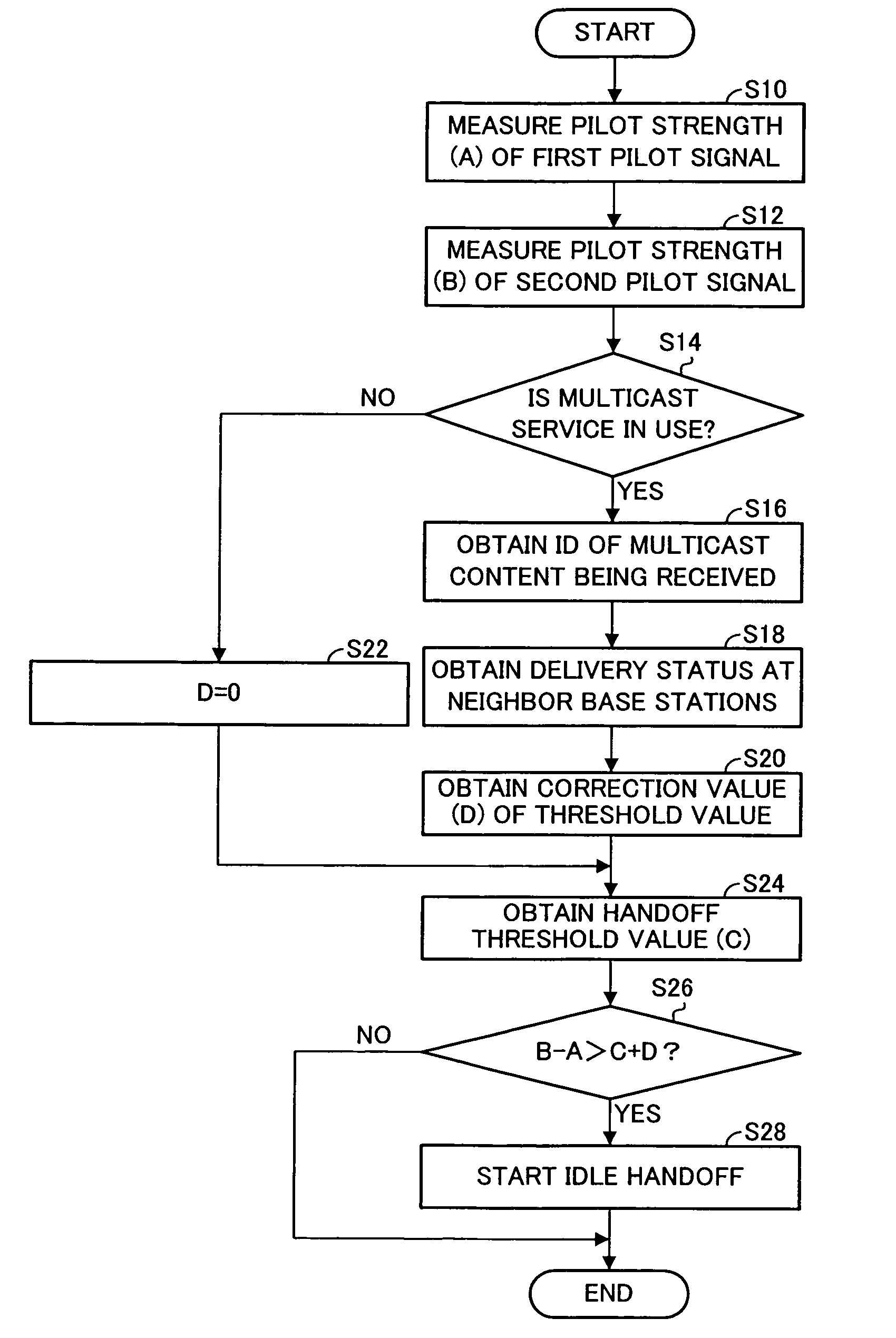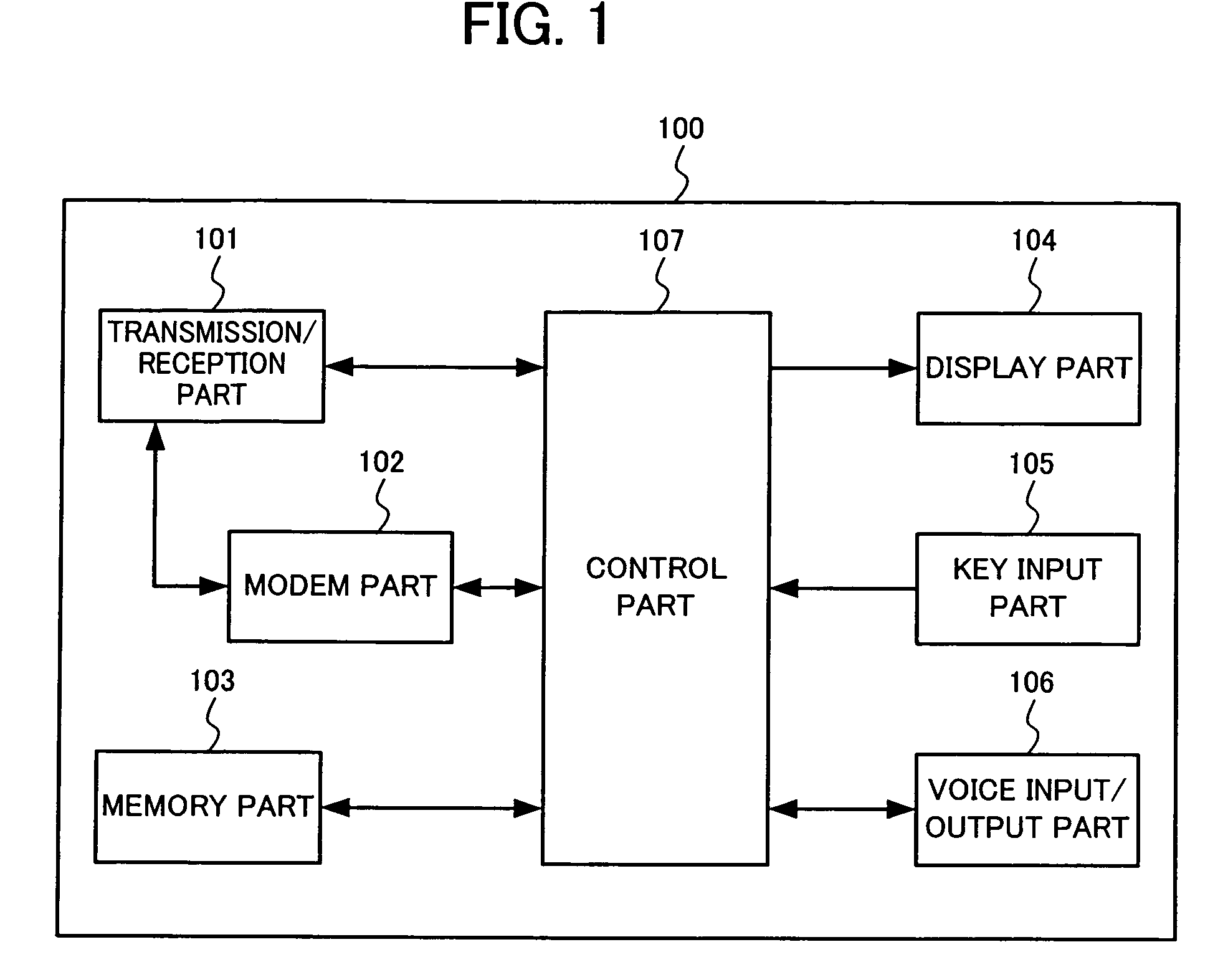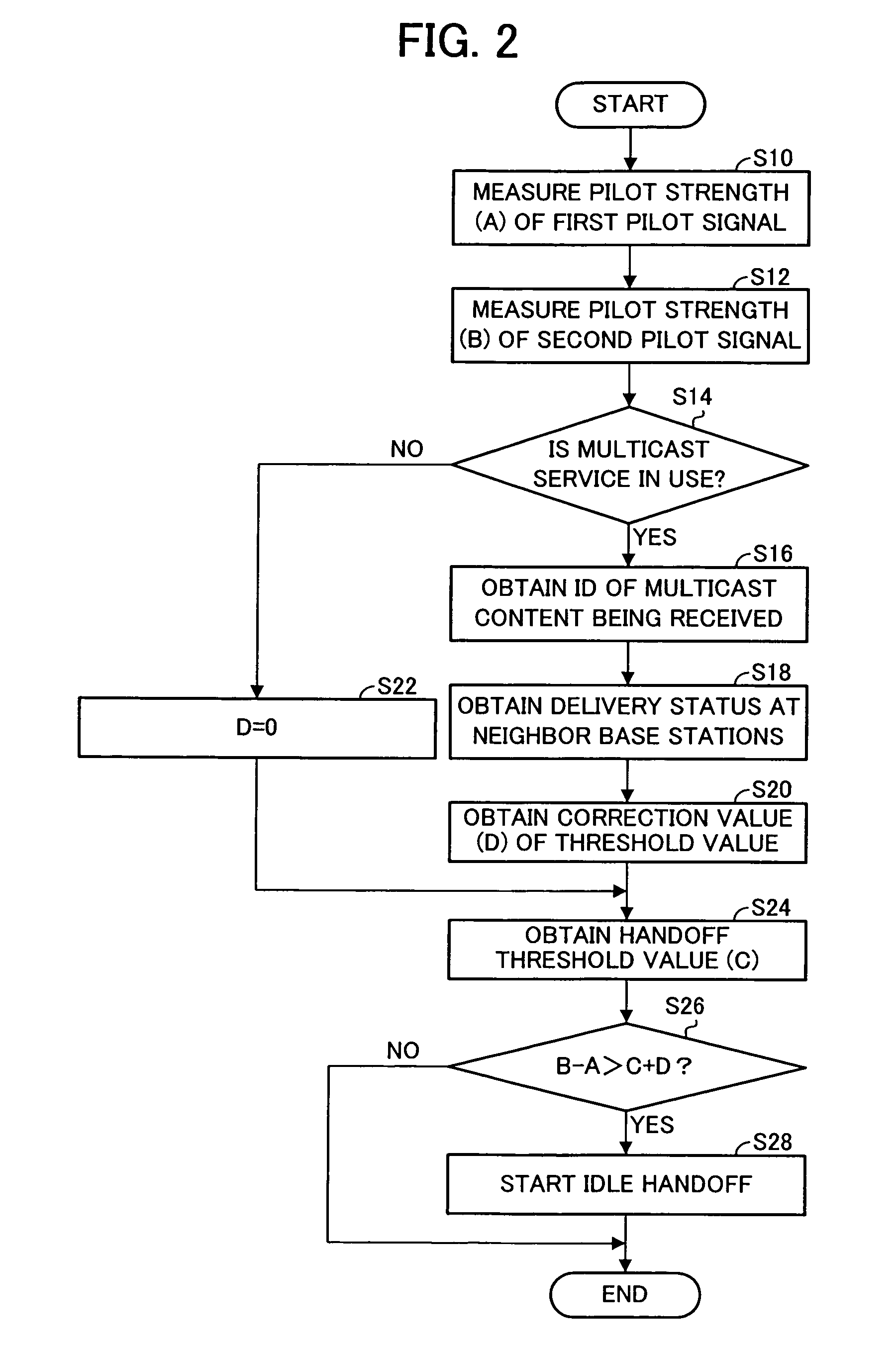Handoff control method and mobile station
a control method and mobile station technology, applied in the direction of wireless commuication services, broadcast service distribution, electrical equipment, etc., can solve the problems of frequent idle handoff, power consumption, and inability to continue reception, and achieve the effect of improving user-friendliness
- Summary
- Abstract
- Description
- Claims
- Application Information
AI Technical Summary
Benefits of technology
Problems solved by technology
Method used
Image
Examples
first embodiment
A. First Embodiment
[0053]A-1 Configuration of the First Embodiment
[0054]FIG. 1 is a block diagram showing a configuration of the mobile station according to a first embodiment of the present invention. In this diagram, the mobile station 100 comprises a transmission / reception part 101, a modem part 102, a memory part 103, a display part 104, a key input part 105, a voice input / output part 106, and a control part 107. The transmission / reception part 101 performs transmission and reception of wireless signals. In addition, the transmission / reception part 101 measures the pilot strength of signals received from a wireless base station, particularly the strength of pilot signals. The modem part 102 performs modulation / demodulation of received / transmitted data. The memory part 103 stores programs, voices, images, mail, web, and other user data. The memory part 103 can be either memory embedded within a communication terminal or an external memory, such as a removable memory card.
[0055]Di...
second embodiment
B. Second Embodiment
[0075]Next, a second embodiment of the present invention is explained. The configuration of the mobile station 10 is the same as that in FIG. 1 and, therefore, explanation thereof is omitted. FIG. 6 is a flowchart for explaining the process for adding the base station, of which the pilot strength has risen, as the base station (referred to as the Candidate Set) which becomes a candidate for the idle handoff destination, in the idle handoff control method according to the second embodiment. The operations for each step are explained below.
[0076]First, the control part 107 measures the strength of the pilot signal via the transmission / reception part 101 (step S30). This pilot strength is A. The pilot signal stated herein refers to pilot signals excluding those transmitted by the base station the mobile station 100 is awaiting and pilot signals transmitted by the base stations, out of the other base stations, which are idle handoff destination candidates. If there i...
third embodiment
C. Third Embodiment
[0084]Next, a third embodiment of the present invention is explained. The configuration of the mobile station 100 is the same as that in FIG. 1 and, therefore, explanation thereof is omitted. FIG. 7 is a flowchart for explaining the process for deleting the base station, of which the pilot strength has fallen, from the base station (Candidate Set) which becomes a candidate for the idle handoff destination, in the idle handoff control method according to the third embodiment. The operations for each step are explained below.
[0085]First, the control part 107 measures the strength of the pilot signal via the transmission / reception part 101 (step S50). This pilot strength is A. The pilot signal stated herein refers to one pilot signal out of those transmitted by the base stations which are idle handoff destination candidates of the mobile station 100. If there is a plurality of pilot signals which satisfy this condition, this sequence can be repeated the same number o...
PUM
 Login to View More
Login to View More Abstract
Description
Claims
Application Information
 Login to View More
Login to View More - R&D
- Intellectual Property
- Life Sciences
- Materials
- Tech Scout
- Unparalleled Data Quality
- Higher Quality Content
- 60% Fewer Hallucinations
Browse by: Latest US Patents, China's latest patents, Technical Efficacy Thesaurus, Application Domain, Technology Topic, Popular Technical Reports.
© 2025 PatSnap. All rights reserved.Legal|Privacy policy|Modern Slavery Act Transparency Statement|Sitemap|About US| Contact US: help@patsnap.com



